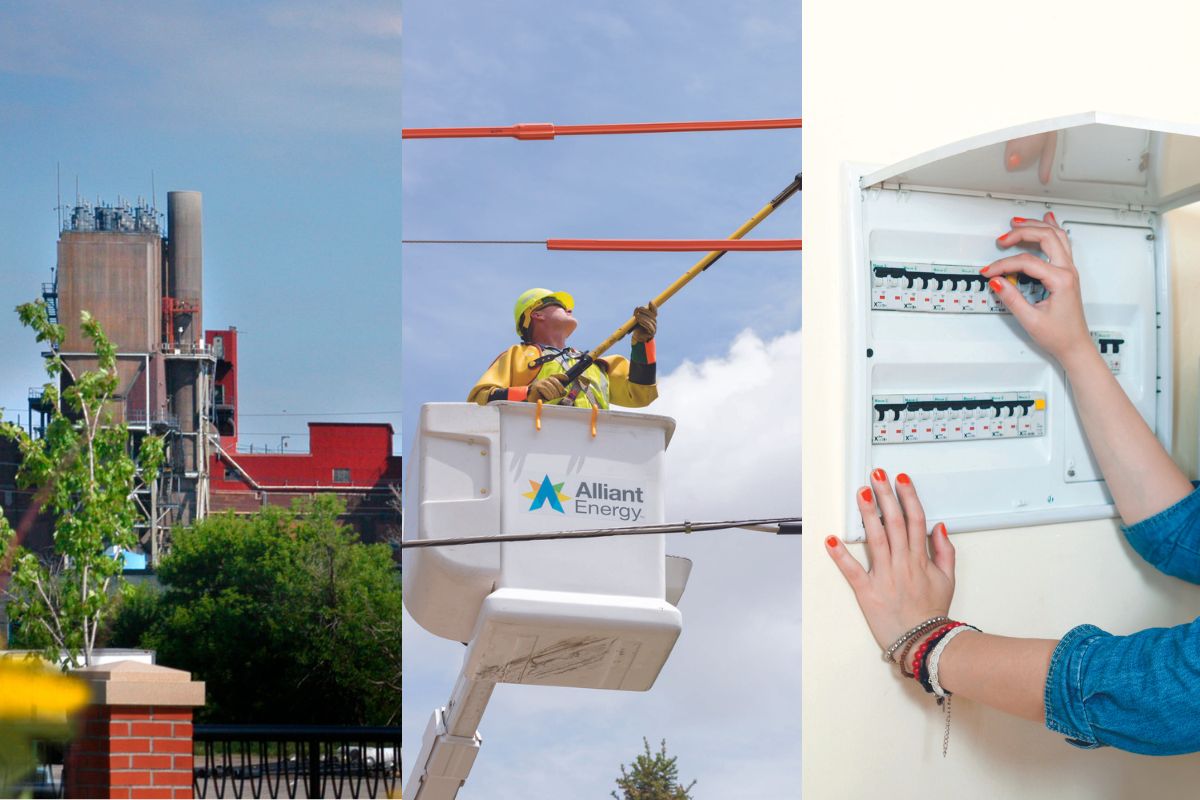When you need some light, you flip a switch. Do you ever wonder what goes on behind the switch?
The resources used to generate electricity, be they renewables like solar, wind and hydro or fossil fuels like natural gas and coal, occur naturally in our environment. Before energy can power your home, it undergoes a process of transformation to an electrical current safe for everyday use.
Generation
With wind, hydropower, natural gas and coal, generation works much like a windup toy. When you turn the key on the outside of the toy, it tightens a spring connected to a gear on the inside. You let go of the key, the coil releases and the gear powers the toy’s movement. Turning a turbine is like winding up the toy. A generator transforms energy from the rotation into an electric current.
Solar power works a little differently converting heat from the sun, rather than turbine movement, into electricity.
Transmission
Once generated, the electric current goes to a nearby power substation. A transformer at the substation increases, or steps up, the current’s voltage in preparation for long-distance transmission. Voltage on transmission lines ranges from 110,000 to 765,000 volts.
Volts measure the ease or difficulty of the electric flow. Stepping up the current’s voltage works similar to greasing a pan to bake a cake. When the cake is ready to be taken out of the pan, the oil makes for clean removal without leaving any crumbs or stuck-on bits behind. Higher voltage during transmission minimizes loss of electricity in transit, a practice that increases efficiency and decreases costs.
Distribution
Transmission lines carry electric current to a power substation close to your home where the current is stepped down from high voltage to low voltage.
Lower voltage is necessary at this stage to allow the current to move across distribution lines that deliver electricity to your home. Before electricity is ready to be safely used, the current enters a small transformer box on a utility pole or underground line close to your home, where it is further lowered to around 240 volts.
Home use
Circuit breakers control the flow of electricity into your home and route it to the various outlets and light switches. They can also shut down power if an overload occurs.
The amount of electricity you need is determined by how you use your devices, appliances and lights, and is something you can manage. Take a free online home energy assessment to find personalized ways to save energy and live comfortably.
The next time you flip a light switch, think of everything that needs to happen to illuminate the bulb. A lot goes on behind that little plate!

The flow of electricity from start to finish

Grant Barton
Communications Partner
Published on November 20, 2023
Grant Barton is a Communications Partner with a passion for sustainability and eco-friendly city planning. He has a diverse background in engineering, politics and international communications and hopes to apply this experience when writing and breaking down complex topics related to Alliant Energy's Clean Energy Future plans.
Recent Stories
130-year-old northern Wisconsin manufacturer logs energy efficiency milestone
Great Lakes Veneer in Marion, Wisconsin earned a 2023 Energy Efficiency Excellence Award from Focus on Energy.
Read More
Ask an engineer: Three-phase vs. single-phase motors
Are three-phase motors more efficient than single-phase ones? Three-phase motors are slightly more efficient and cost-effective for two reasons: The power delivery mechanism and motor design.
Read More
Alliant Energy powers Cedar Rapids' economic development
Alliant Energy is a key partner in Cedar Rapids' economic development efforts. This includes investing in one of the state’s largest development-ready sites and partnering with local organizations to support our customer’s sustainability goals.
Read More